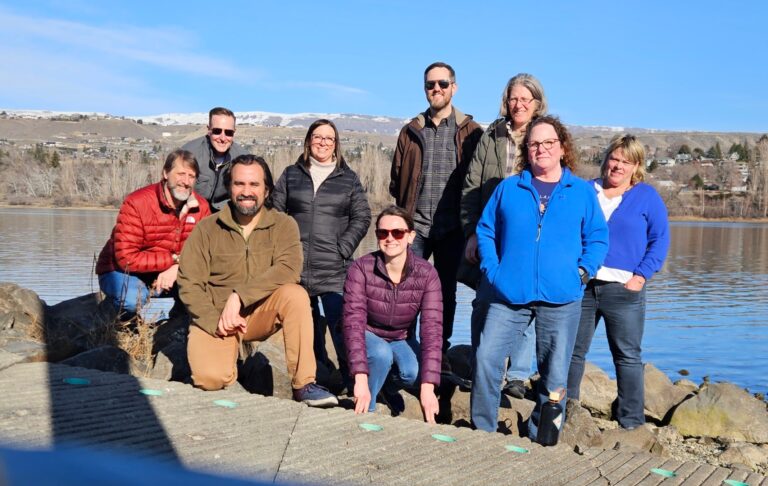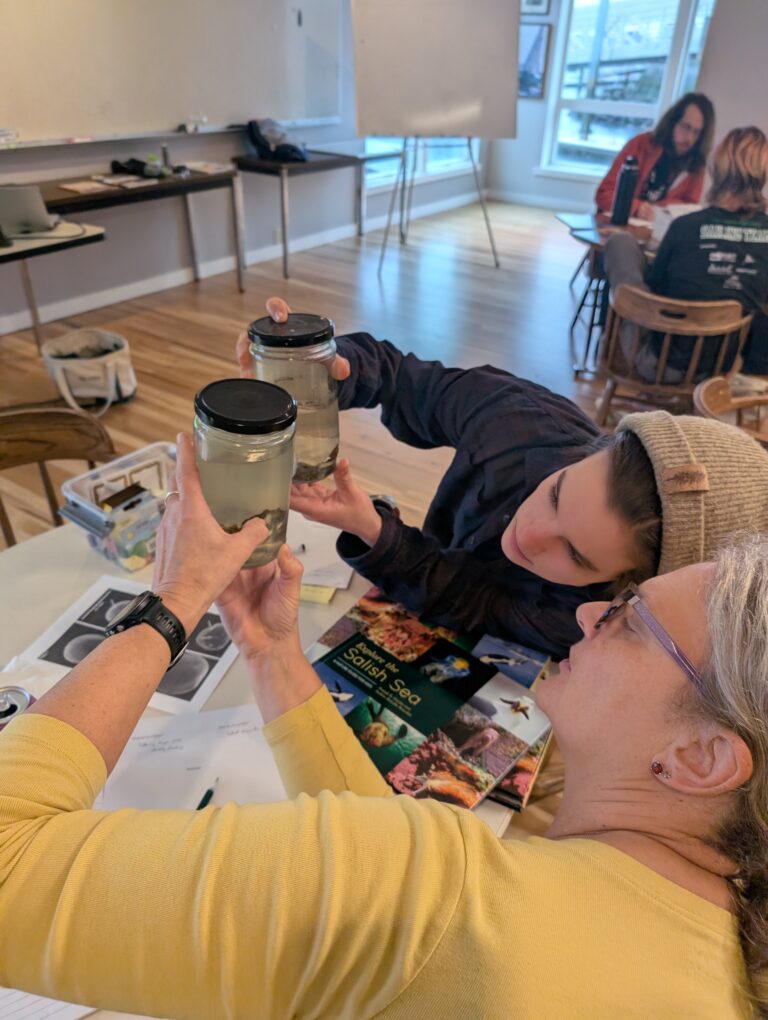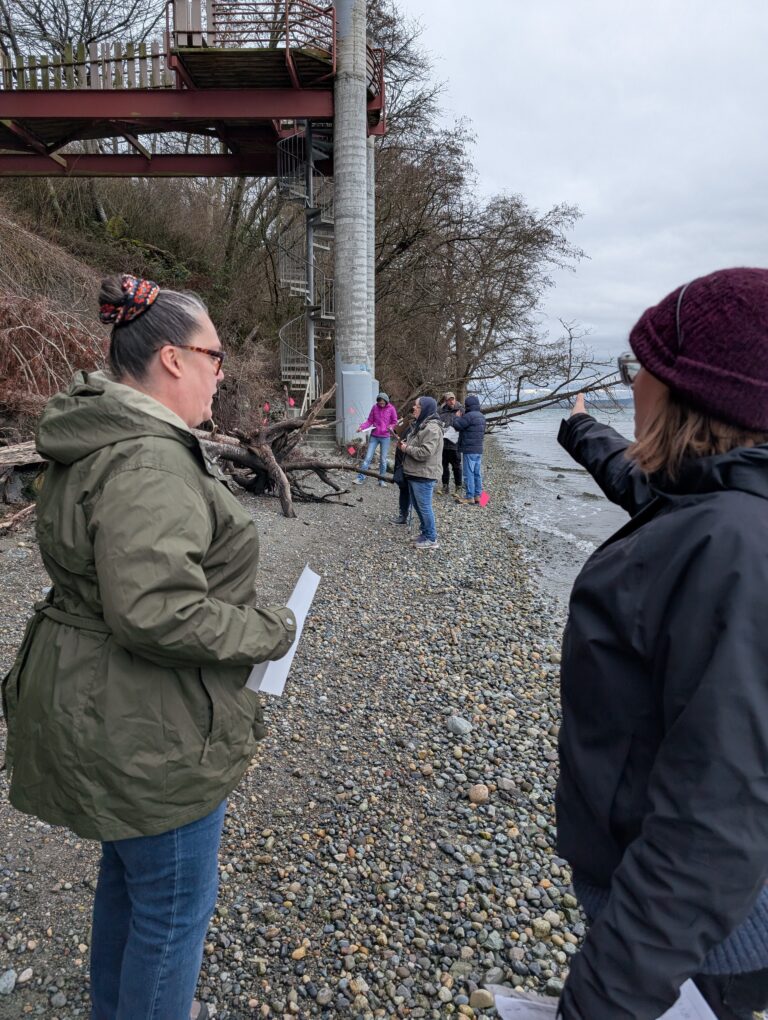Is erosion always bad? Eighteen teachers from eleven northwest school districts grappled with this question at an in-person Connecting Communities Through Wetland Education workshop in March, a collaborative effort between Padilla Bay Estuarine Reserve and PEI.
The workshop’s focus was highlighting diverse perspectives of Skagit County communities impacted by wetland mitigation through the lens of field-based learning. “This was one of my favorite workshops I’ve ever done at PEI,” says Northwest FieldSTEM Coordinator Amy Keiper-Gowan. “We had a lot of fun and teachers took a lot away.”
One of the first activities was a walk around the reserve where teachers made observations based on a set of guiding questions. They looked for examples of water’s impact on the land, evidence of wave action and any places where the shoreline was being stabilized. Then they heard from reserve director Jude Apple about the reserve’s conservation work and from Skagit Land Trust conservation project manager Karen Odden.
“Karen shared the history of the land,” Keiper-Gowan says. “She explained the challenging decisions for community members in the county around water and erosion impacts. The community’s decision-making process is complex and getting to the point of action is tough.”
As an example, residents of Samish Island are significantly impacted by erosion. Samish Island Road crosses a thin stretch of land that has repeatedly flooded in recent years, cutting off access to the island. The community needs to decide whether to reinforce existing dikes or allow water to seep in slowly, which might render a swath of land unusable. Residents want to build a road or causeway to ensure access, especially for emergency services.
Other community members have different priorities, as participants learned during an experiential activity in which they role-played various affected parties in Skagit County, including government, industry, business, farmers and environmental organizations. They read a place-based case study summarizing an affected party’s viewpoint and shared it with the group. At least one teacher plans to use that activity with students, reporting that ‘Role playing different opinions regarding environmental topics’ was an aspect of learning they were most likely to use in their classroom.
“I would like to incorporate how rising waters is affecting our community and the civics connection piece about the wetlands.”
– Workshop Participant
Then there was the erosion question. Padilla Bay Coastal Training Programs manager Sara Brostrum led the morning beach walk and asked participants to place flags where they saw water interacting with the land. Brostrum explained the process of natural erosion, which occurs over time through a combination of seawater and wind. So-called ‘feeder bluffs’ provide an ecological benefit by feeding sediment to the Salish Sea and making surrounding beaches larger and stronger. “Forage fish need to have those extended beaches to lay their eggs. A healthy beach will naturally be reinforced by sediment brought to it by ocean water,” Keiper-Gowan explains.
On the other hand, sometimes human engineering attempts to use water as a resource can lead to unnatural erosion events. “We noticed a pipe that had exploded and been repaired,” Keiper-Gowan says. “It was designed to take upland water and drain it into the ocean, but it leaked, creating a focused and continuous stream of water onto one small section of the bluff. Eventually this whole bluff was destabilized, crumbling to the beach. That’s the type of destabilization that’s not great for the environment or human infrastructure.”
Keiper-Gowan points out that when humans engineer these types of water systems, it’s important to consider what nature’s process is. “I wonder if there would be a method to disburse water more evenly across the landscape and give it a chance to be slowed and soaked up by vegetation before arriving at the beach?” she asks.
Brostrum also shared information about data portals the teachers can use to incorporate real-world science in their classrooms. Elementary school teachers were excited to learn about Padilla Bay’s education programs, which include an aquarium, a large touch tank, beach walks and outdoor programming provided by Padilla Bay’s Outreach and Education Coordinator Chandler Coahan.
Overall, the group came away with an expanded understanding of the intersection of wetland mitigation, ecology and civics. “I would like to incorporate how rising waters is affecting our community and the civics connection piece about the wetlands,” said one participant in a post-workshop evaluation. Another simply said, “Erosion: not always a bad thing.”




